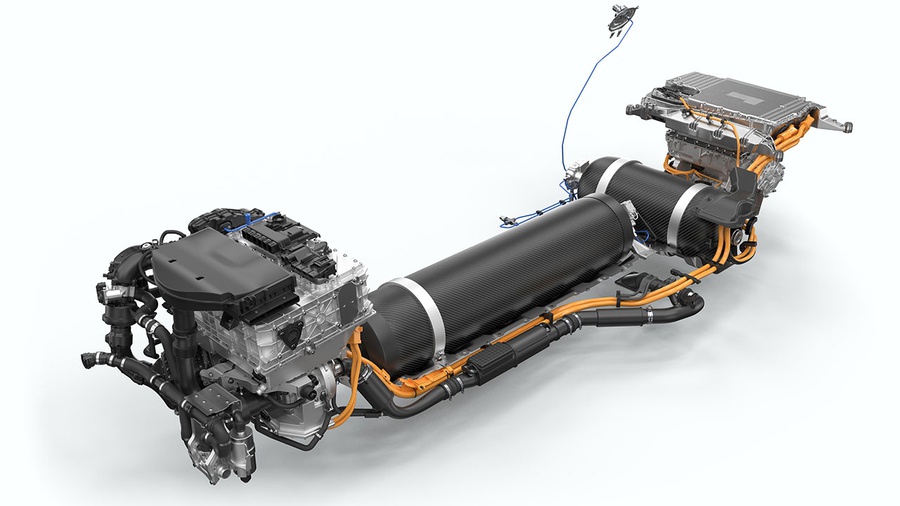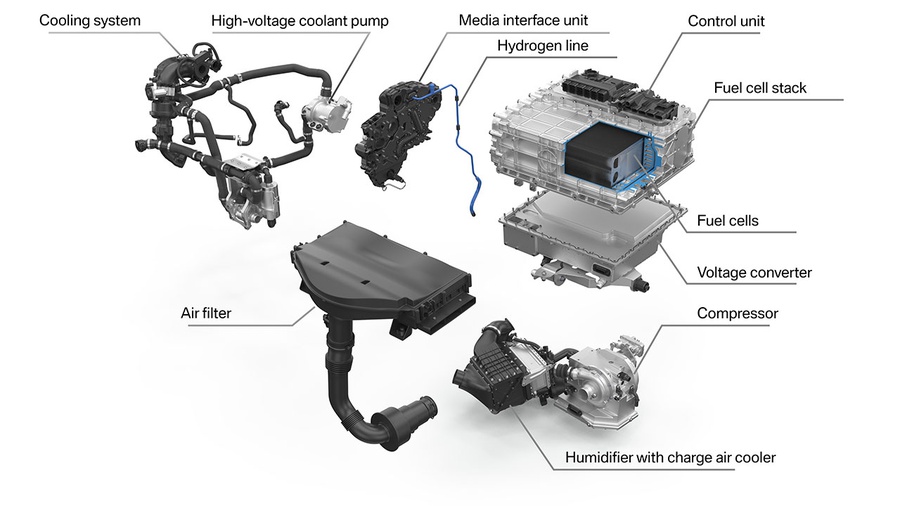The BMW Group purchases the individual fuel cells required for the production of the BMW iX5 Hydrogen from Toyota Motor Corporation. However, their final assembly is carried out at the Competence Center in Munich using a number of original components designed and manufactured by BMW, including the compressor and coolant pump.
After being inspected for damage, the fuel cells are packaged in a single block and placed in an aluminum housing manufactured in the foundry of the BMW Group plant in Landshut. The pressure plate supplying hydrogen and oxygen to the fuel cell stack is made from molded plastic parts and light alloy castings, also from the Landshut plant. The pressure plate forms a gas-tight and water-tight seal around the body of the fuel cell stack.
In a fuel cell, a chemical reaction takes place between hydrogen from the tanks and oxygen from the air. The electrochemical generator on the iX5 Hydrogen delivers 125kW of continuous power, or 170 horsepower. At the same time, the power of the electric motor is 275 kW or 374 hp. Hydrogen is stored in two composite cylinders at a pressure of 700 bar.
The first batch of BMW iX5 Hydrogen crossovers will be used to test the technology and prepare for mass production. BMW hydrogen crossovers will be available to private buyers in early 2025.
Source: BMW
.jpg)



